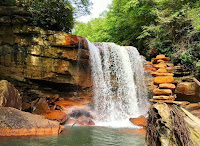What to know before buying your first cross country ski set up
When searching for the perfect xc ski, the most important thing to look for is skis with scales. Scales refers to the fish scale like texture on the underfoot of your ski that prevents the ski from sliding backwards. Scales also slow you down going forward, which is why you will not find them on traditional skate skis or alpine skis.
Next, you want to think about parabolic (wider at the ends, more narrow in the middle) versus classic (same width for the entire length of ski). Parabolic skis help you turn and allow for any type of binding. However, they are wider and typically come with a metal edge (also helps you turn), which creates a much heavier ski. The classic xc ski is a little harder to maneuver and has limited binding selections, but is much lighter. The weight of your ski set up is important to consider because the heavier the set up, the more strain on your muscles, specifically your hip flexors. Think about the fact that every time you herringbone (uphill ski technique) you will be lifting your foot, boot, binding and ski. The weight adds up.
Once you have a type of ski in mind, start looking at bindings. There are three types of bindings for touring; cable, three pin and bar (technically referred to as NNN). Cable bindings go around the entire boot and clip into the heel, they offer the most control but are the heaviest. They are typically only mounted to wider parabolic skis. Three pin offers moderate control with the front of your foot, are moderate weight and are compatible with any ski. The bar (or NNN) offers the least control but is by far the lightest & cheapest binding. You will see this binding on classic xc skis as well as wider skis (a wider/heavier ski with a lighter binding evens out and makes touring more accessible). Honestly, I think that if you’re choosing between 3 pin and bar, the difference will be in the boot and not the binding.
After you know what binding you want, you can start looking for boots. The way I classify this is; plastic, classic and Alaska’s. Plastic boots have lots of pros. They keep your feet dry and warm while offering total ankle support, which translates to more control and stability on the downhills. However, they are heavy and only work with cable bindings. Your classic xc boot, such as Rossignol XC-1 Nordic Ski Boots, will be lightweight, compatible with bar bindings and your cheapest option. No matter the brand or style, you’re pretty much going to get the same thing; wet, cold feet and wobbly ankles (can you tell I'm not a fan? lol). The Alpina Alaska boots are the golden ticket. They offer similar support and dryness as the plastic boot, without the weight, and offer styles compatible with every binding option. The only downfall of these boots is they are expensive and rarely on sale, which can be a big investment for a first time purchase.
The only thing left is poles. Brand doesn’t matter, but style does. I like extendable poles because your poles need to be longer on the uphill, shorter on the downhill and at your shoulders on flat ground. Especially starting out, it’s important to play around with the length of your poles to find what suits you best. I think that is most easily done with adjustable poles.
For reference; I learned on classic xc skis, bar binding and classic boots. After many, many seasons, I traded in for Fischer S-bound 88 (parabolic skis), cable bindings and soft shell plastic boots (the most flexible plastic boot). After trying these skis I felt like a toddler who had been attempting to ride a mountain bike and was finally given training wheels. I stopped eating shit and was finally able to learn the skills needed to turn. I’ve been on this set up for probably five years now and my next set up will be classic xc skis (Rossi Evo trail IFP), bar or 3 pin binding and Alaska boots. Now that I no longer need training wheels, it will be nice to tour on a much lighter set up.
If buying anything I suggest new boots (they last forever and are a good investment) and used skis (xc skis get drug over roots, rocks and gravel. It’s like buying a brand new car only to drive it on backroads. Doesn’t seem worth it in my book.
Also, It’s good to invest in a scraper and f4 wax. Snow clumps to the bottom of your skis around 32 degrees and makes gliding almost impossible. Keep your skis cool and dry, apply f4 before going out and keep a scraper in your pocket to scrape off clumps as they form.






Comments
Post a Comment